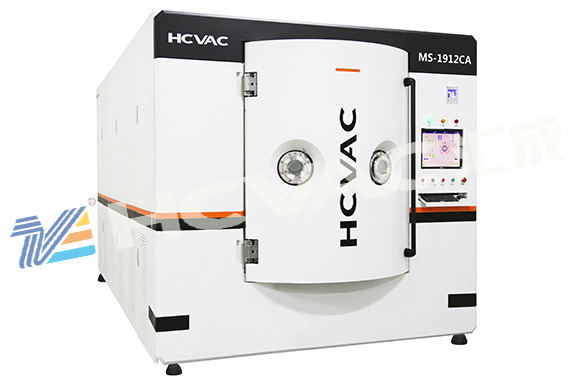Everyone is familiar with the magnetron sputtering vacuum coating machine and knows that it is widely used, but do you know the magnetron sputtering technology? For example, magnetron sputtering is divided into several categories. Have you ever heard of it? Let us introduce the types of magnetron sputtering in detail.

There are many types of magnetron sputtering. Each has different working principles and application objects. But they have one thing in common: the interaction of the magnetic field and the electric field causes the electrons to spiral around the target surface, thereby increasing the probability of the electrons hitting the argon gas to produce ions. The generated ions hit the target surface under the action of an electric field to sputter out the target.
The target source is divided into balanced and unbalanced types. The balanced target source has a uniform coating, and the unbalanced target source coating has a strong bonding force with the substrate. Balanced target sources are mostly used for semiconductor optical films, and unbalanced targets are mostly used for wear decorative films. Magnetron cathodes can be roughly divided into balanced and unbalanced magnetron cathodes according to different magnetic field configurations. The magnetic flux of the magnetic steel inside and outside the balanced magnetron cathode is roughly equal, and the magnetic field lines of the two poles are closed on the target surface, which well confines the electrons/plasma near the target surface, increases the probability of collision, and improves the ionization efficiency. Under air pressure and voltage, the glow discharge can be ignited and maintained, and the target utilization rate is relatively high. However, because the electrons move along the magnetic field lines and are mainly closed to the target surface, the substrate area is less bombarded by ions. Unbalanced magnetron sputtering The technical concept is that the magnetic flux of the outer magnetic pole of the magnetron cathode is larger than that of the inner magnetic pole, the magnetic field lines of the two poles are not completely closed on the target surface, and part of the magnetic field lines can extend to the substrate area along the edge of the target, so that some electrons can extend to the substrate along the magnetic field lines. Increase the plasma density and gas ionization rate in the substrate area. Regardless of the balance or non-equilibrium, if the magnet is stationary, its magnetic field characteristics determine that the general target utilization rate is less than 30%.
In order to increase the utilization rate of the target material, a rotating magnetic field can be used. But rotating the magnetic field requires a rotating mechanism, and at the same time the sputtering rate is reduced. Rotating magnetic fields are mostly used for large or expensive targets. Such as semiconductor film sputtering. For small equipment and general industrial equipment, the magnetic field static target source is often used. It is easy to sputter metals and alloys with magnetron target sources, and ignition and sputtering are convenient. This is because the target (cathode), plasma, and the sputtered part/vacuum chamber can form a loop. But if sputtering insulators such as ceramics, the circuit is broken. So people use high-frequency power supply, and add a strong capacitor to the loop. In this way, the target material becomes a capacitor in the insulating circuit. However, the high-frequency magnetron sputtering vacuum coating machine has expensive power supply, small sputtering rate, and complicated grounding technology, so it is difficult to use it on a large scale. To solve this problem, magnetron reactive sputtering was invented. That is, using a metal target, adding argon and a reactive gas such as nitrogen or oxygen. When the metal target hits the part, it combines with the reactive gas to form nitrides or oxides due to energy conversion. The magnetron reactive sputtering of insulators seems easy, but the actual operation is difficult. The main problem is that the reaction occurs not only on the surface of the part, but also on the anode, the surface of the vacuum chamber, and the surface of the target source. Thereby causing fire extinguishing, target source and workpiece surface arcing and so on. The twin target source technology invented by Huicheng Vacuum solves this problem very well. The principle is that a pair of target sources are the cathode and anode of each other, thereby eliminating the oxidation or nitridation of the anode surface. Cooling is necessary for all sources (magnetron, multi-arc, ions), because a large part of the energy is converted into heat. If there is no cooling or insufficient cooling, this heat will make the target source temperature reach more than 1,000 degrees and melt the entire target source. .



